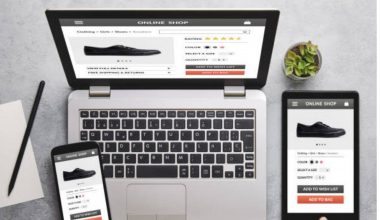Brand equity revolves around the ways people, especially customers, view your brand. Having positive brand equity helps to improve your business. The more brand equity you have, the higher the stakes are for your company. As a business owner, you may or may not be new to this word, but the important thing is that it is essential for building a positive image for all companies alike. In this guide, you could know how to build brand equity in marketing and its examples/
Brand Equity
The image people portray about a product can affect its progress in the market. Brand equity is crucial for comprehending the competitive dynamics and price structures of business-to-business markets. Brand equity is one of the variables that can raise the financial value of a brand.
According to some marketing researchers, brands are one of the most important assets a company has. There are factors to evaluate while valuing brand equity. They include
- Changing market share
- Profit margins,
- Consumer awareness of logos
- Consumers
- Consumer perceptions of quality,
Although consumer markets have been the focus of the majority of brand equity research. Competition in industrial marketplaces is frequently based on disparities in product performance. Such pricing advantages are a reflection of reputed manufacturers’ strong brand equity.
Brand equity is strategically important but notoriously challenging to measure. There is no established way to measure this asset, despite the fact that several specialists have created tools to examine it. The discrepancy between quantitative and qualitative equity values is one of the persistent problems that marketing experts and academics encounter with the concept of brand equity.
What Is a Brand Equity?
Brand equity is the commercial worth that stems from how customers view a particular product or service’s brand name as opposed to the actual good or service. It is the highest standard that a company generates from a product with a popular title and brand name when compared to a general equivalent.
Businesses can create product equity for their products by making them recognizable, memorable, and of higher quality and dependability. Brand equity is the value of a brand as a stand-alone entity. In advertising, brand equity refers to the amount of influence a brand term has over the client’s perceptions as well as the benefit of having a distinguishable and well-recognized brand. Brand equity is also developed through mass marketing initiatives.
Customers will happily pay a high price for a firm’s goods even when they could buy the same thing from a rival for less when that company has strong brand equity. Customers, in essence, pay a higher price to work with a company they respect and are familiar with.
The price differential flows to the margin of the company with brand equity because it does not cost it more than its rivals to produce and promote the product. Due to the company’s strong brand recognition, each sale results in a higher profit.
When a brand is spoken in this sense, it refers to any name, word, design, or symbol that distinguishes a certain good or service from competing ones on the market.
What Are the Four Benefits of Brand Equity?
#1. It Gives your Business a Competitive Edge
The largest benefit of having strong brand equity is possibly this: You get to establish yourself as a reliable supplier of goods in your niche by differentiating your brand and your items. That always indicates to the market that consumers strongly favor your goods. Customers that have a positive perception of your brand may even be willing to pay more for your goods and services. Because of the strength of your brand, you won’t just be competing on price. Instead, you’ll be providing your clients with good value that meets their needs rather than just good deals.
Due to the loyalty, goodwill, and brand equity that have been developed over the years. Rival brands typically find it challenging to overtake established brands in a certain market sector.
#2. It Increases Company Loyalty
Brand equity is fundamentally based on customer loyalty. If your brand is powerful and well-known, you will always have a base of devoted customers buying your goods. This has an effect on a company’s bottom line. A loyal customer base not only ensures a steady flow of customers but also lowers your marketing or customer acquisition costs. Customer loyalty has the advantage of being difficult to transfer.
Once a customer develops a strong emotional bond with a brand as a result of the benefits they receive from engaging with it, they will remain loyal to it for the rest of their lives.
#3. It Can Raise your Business’s Margins.
Positive brand equity will result in healthy profit margins for your company. You may not only charge a lot for your goods and get away with it, but you can also continue to sell them without incurring a high expense for new customers. Customers that appreciate and regard your brand highly will be willing to pay more even if there are less expensive and higher-quality alternatives to have a piece of it.
As an illustration, consider some of the most prestigious luxury brands in the world, like Rolex, Cartier, Rolls Royce, Patek Philippe, Hermes, Chopard, and Prada. Customers have a choice, but some of these premium companies have them eager to spend their entire life savings on them.
#4. You Can Effortlessly Grow Your Business
You may expand your company into new markets if your brand equity is strong without having to spend a lot of money trying to establish your brand. Customers will be keen to try out your brand as you explore new markets.
Brand Equity Examples
Despite some turbulent developments over the past ten years, Apple’s brand worth was an amazing 947 billion dollars in 2022. In fact, Apple beat out Amazon, Google, and Microsoft that year to take the top spot in a list of the most valuable brands globally.
What accounts for Apple’s success?#
#1. Apple
We’ve all heard stories about the long lines of people waiting to purchase the newest iPhone at Apple product introductions and releases, and we’ve even seen them in person. In reality, the iPhone is what gives Apple its biggest sales boost globally. Customer loyalty is the foundation of the business’s enduring success. Customers continue to purchase Apple items because they have successfully cultivated a sense of exclusivity and elegance around their offerings.
The chance to become a member of the exclusive club of iPhone, iPad, and Mac owners also appeals to new users. When examining the rising market share of iOS smartphone sales, this tendency is apparent. As a result, the premium pricing really acts as bait and a hook rather than as a deterrent. With global revenue expected to exceed 274.5 billion dollars in 2020, Apple’s yearly financial statistics reflect its expanding success.
#2. Amazon
An international e-commerce corporation called Amazon.com provides local services including daily discounts and groceries in addition to online retail, computing services, consumer goods, and digital content. With close to 470 billion dollars in net revenue in 2021, Amazon will continue to be the top e-retailer in the US. Electronics and other retail sales online account for the majority of the business’s revenue, which is then created by subscriptions, third-party seller income, and AWS cloud services. Amazon is regarded as one of the most valuable brands in the world because of its global breadth and reach.
Brand Equity In Marketing
Brand equity in marketing refers to both the value of having a recognizable and well-thought-out brand as well as the degree of effect a brand name has on consumers’ minds. Businesses can build brand equity for their products and services by making them distinctive, noticeable, and more dependable, and high-quality.
A brand’s value is referred to by the marketing phrase “brand equity.” The way consumers perceive and interact with a brand influences its value.
In marketing, brand equity refers to a brand’s intrinsic value, or the perceived social value of a well-known brand name. Due to consumers’ perceptions that products from well-known brands are superior to those from lesser-known brands, the owner of a well-known brand name can make more money just by virtue of brand recognition.
Brand equity has been examined in the research literature from the viewpoints of cognitive psychology and information economics. Cognitive psychology claims that brand equity is based on customer knowledge of the brand’s relationships and qualities, which influence attribute perceptions. Information economics claims that a strong brand name serves as a reliable indicator of product quality for consumers who are only partially educated and results in price premiums as a type of return on branding investments.
In instance, enterprises are able to charge price premiums that originate from brand equity after controlling for observed product differentiation, which is evidence that brand equity plays a significant role in the determination of price structure.
How To Build Brand Equity
Knowing how to build brand equity and utilizing it will give you an upper edge when it comes to competition. They are following to follow:
#1. Engage Prospects and Customers
Talking to customers is one of the simplest methods to determine how much brand equity a company currently has, according to a brand equity explainer from visual design site Canva. Of course, you can increase brand equity from there once you know where to start.
Canva proposes newsletters, Q&As, and providing behind-the-scenes access on platforms like Instagram Stories as further alternatives for consumer involvement
#2. Promote Connections and Trust
According to Shopify, the process of establishing brand equity is similar to establishing customer relationships because brand equity is connected to the customer experience. You start by promoting a brand and enticing customers to try a certain good or service.
Your brand becomes a customer preference and eventually a customer favorite if the first two strategies are successful. In a best-case scenario, that endpoint occurs when a consumer actively chooses to become a brand evangelist in order to share his or her experience and recruit others to the cause, rather than simply selecting a product.
Any product connected to the brand reaps the benefits of their admiration, according to Shopify. Therefore, brands can improve their equity by cultivating those ties and converting consumers into fans.
#3. Increase Brand recognition
Brand equity is increased through increasing brand awareness, or how well customers know a particular brand, as long as this awareness is based on pleasant experiences and connections rather than a brand faux pas. (Which would, of course,
Other strategies for raising awareness include producing free content, using a freemium business model, supporting events, or launching a podcast. But whether you’re raising awareness among the appropriate customers also affects how your brand resonates with customers. To drive new, high-quality traffic to your website, AdRoll’s audience targeting connects you with the right customers, in the right location, at the right time.
#4. Share Your Brand’s History
A brand must use a brand story to explain its values to customers once it has determined what it stands for. On their websites, brands can actually convey their tales, but they can also incorporate parts of those stories into other brand materials, like social media postings or email outreach.
People are drawn to stories by nature, and companies that effectively convey this message build genuine connections with their customers, which, according to Canva, lays a strong foundation for greater equity.
#5. Make an Investment in the clientele
Investments in the customer experience can be profitable because it is the foundation of brand equity. Sometimes it’s as easy as performing your research to identify the industry’s client pain points and developing a brand experience that steers clear of them. It also entails using the time-tested “surprise and delight” marketing strategy.
Amazon may have perfected it, but that doesn’t mean other firms can’t follow suit by aiming to make every customer interaction enjoyable for the customer.
And even though brand experiences will undoubtedly vary depending on factors like the industry and customer needs, brands are wise to consider how they can create a distinctive customer experience that sets them apart from rivals as an additional strategy for attracting customers and enhancing brand equity.
#6. Keep an Eye on Your Equity’s Source.
A brand audit should contain a history of the company’s most recent marketing initiatives as well as data on how customers reacted to those initiatives. Surveys, focus groups, and/or other consumer research can be used to gather the latter.
#7. Create Upcoming Marketing Initiatives
Keller also referred to brand equity as a bridge that permits marketers to move from the past to the present.
He continued, “That is, all the money spent on marketing each year may be looked at less as expenses and more as investments—investments in what consumers know, feel, recall, believe, and think about the brand.
This then aids marketers in determining what to do next in order to increase equity.
According to Keller, “anything the company does can help increase or detract from brand equity.” Strong brand marketers have embraced the idea and made the most of it to communicate, execute, and clarify their marketing plan.
#8. Identify and Engage Your Ideal Clients
You must establish a connection with your target market if you want to increase brand equity. You may gauge how consumers feel about your brand by connecting with your target market. There are numerous options available to you, such as:
Analyzing your web data can teach you a lot about what customers think. Customers may not be looking for you online if that indicates a low level of brand recognition. Data from search volumes is a cheap approach to gauge your brand’s awareness.
You may learn more about consumer perceptions of your brand by analyzing social data. This solution offers in-depth perceptions into both favorable and unfavorable consumer perceptions of your company. Additionally, there are a number of solutions in the social media listening market.
Another common marketing strategy in the digital business environment that can help you connect with your audience is social media live streaming. You may engage with your customers in real time through pre-recorded and live video broadcasts while promoting your brand and reputation by using specialized live streaming solutions like OneStream Live.
What Are the Elements of Brand Equity
Researchers narrowed down the many elements that affect a brand equity: brand viewpoint, brand attachment, and brand awareness
The components are as follows:
- Brand awareness: This is the degree to which people are aware of and can identify a brand.
- Brand loyalty is the extent to which customers continuously favor one brand over another.
- Brand image: This is the opinion that customers have about a company’s image and the qualities, dependability, and distinctiveness that go along with it.
- Brand associations: These are the psychological or emotional connections people make with a product or service, such as emotions of reliability, dependability, or nostalgia.
- Brand value is the term used to describe the perceived advantages and total worth that customers give to a brand, which may have an impact on their purchase behavior.
What Is the Brand Equity of Coca-Cola?
A significant international participant in the beverage sector is The Coca-Cola Company. With over 200 bottling partners globally, the company has its headquarters in Atlanta, Georgia. You would be hard-pressed to find someone who had never heard of Coca-Cola or who couldn’t identify the classic white text on the vivid red background of this worldwide brand. With a global brand worth of over 74 billion dollars, Coca-Cola has consistently been named the best soft drink brand in the world. Diet Coke, Sprite, and Fanta are some of the additional soft drink brands created and marketed by the Coca-Cola Company
Sales for the Coca-Cola Company
The revenue of the Coca-Cola Company has changed recently on a global scale, coming close to 40 billion dollars in its most recent fiscal year. North America was the most profitable part of the Coca-Cola Company’s business that year, making up about a third of its total sales. The second-largest source of revenue for the corporation is bottling investment. The advertising efforts for Coca-Cola are creative and memorable. In the past few years, the company has spent more than $4 billion on advertising as a way to keep its sales going strong.
What Factors Contribute to Brand Equity?
When accessing brand equity for a certain business, a lot of metrics are used. These are factors that contribute to brand equity. They include brand value, brand image, brand association, and brand awareness.
In Conclusion
When compared to a generic alternative, a product with a well-known brand creates a value premium for the corporation. Making items memorable, distinctive, and of the highest caliber and reliability allows businesses to build brand equity for their goods.
FAQs
What are three qualities of strong brand equity?
Your business requires three elements in order to develop brand equity. These include a high-quality item or service in a certain industry, a well-known name and logo, and, most importantly, brand-loyal clients.
What Is Brand Equity Model?
The purpose of brand equity models is to define how a brand’s value is generated. Each brand equity model provides a thorough understanding of the brand value notion and methods for evaluating it. At various phases, brand equity models are utilized to create marketing plans.
What are the 5 A's of personal branding?
- Authenticity.
- Authority.
- Aspiration.
- Affinity.
- Artisanat.






